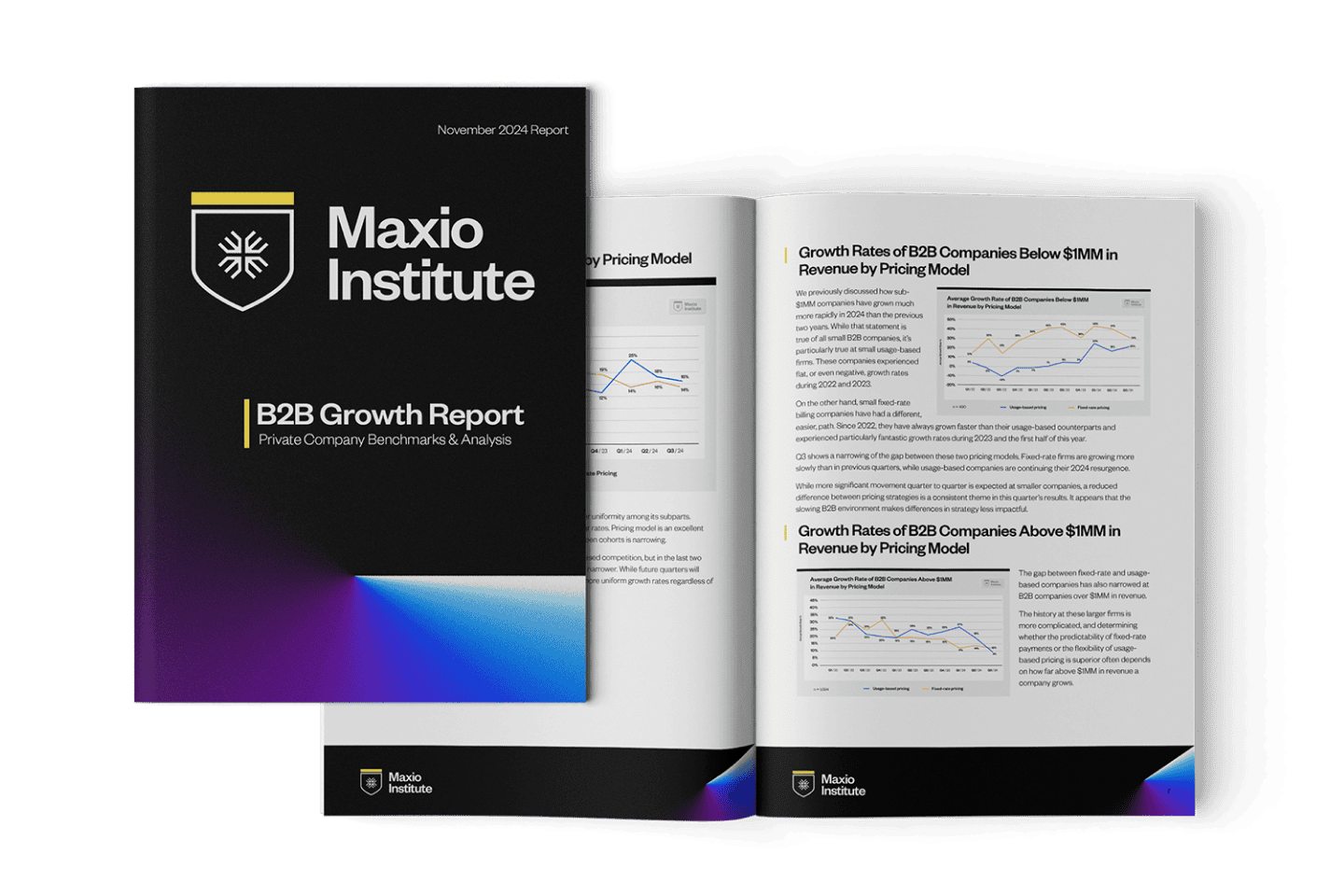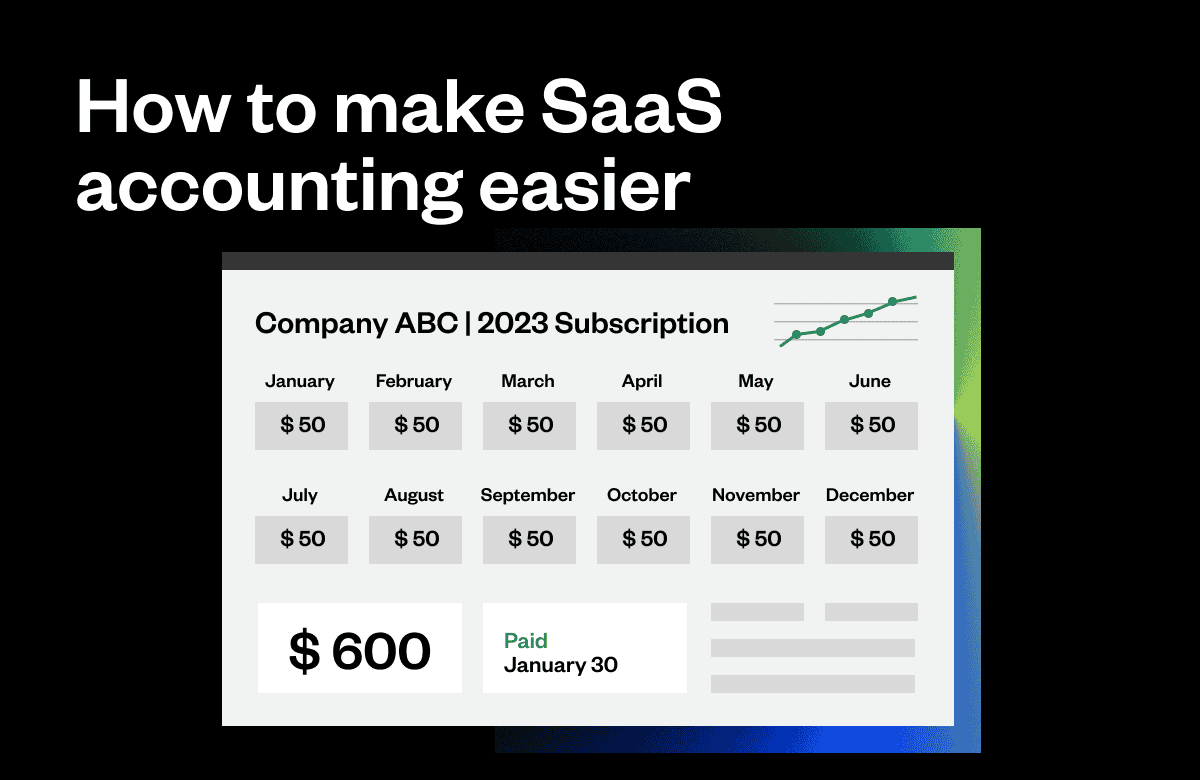On our recent episode of the Get Funded, Stay Funded Podcast, we discuss this topic with Chief Customer Officer and Co-founder, Clayton Whitfield.
In the B2B SaaS / Subscription world, you rarely have a completely homogenous customer base.
Churn Profiles are simply the analytical manifestation of the reality that B2B SaaS/Subscription customers will likely churn for different reasons at different times in their tenure with you. And, in a further complication, at different points in their evolution as a business regardless of their relationship with your business.
At the highest level, a Churn Profile is simply segmentation of your Churn along common characteristics in your customer base.
To construct a churn profile:
- Identify common characteristics in your customer base
- Group your customers by those characteristics
- Look for patterns
- Calculate churn rates for each group
(If you are a Maxio customer, the Cohort reports are the place to start for these as you can create these groupings in seconds and get a jumpstart on the process.)
Simple, but not necessarily easy to do. Below are suggestions for constructing churn profiles for your business.
First, stop assuming and go to the data! If you’ve been at it for a long time, it is possible you already intuitively/empirically know why/when/how your customers churn, but you should still consult the data and build your Churn Profiles. This especially holds if fundraising is in your future. You want to be empowered to have detailed, credible conversations with your potential investors.
Second, at minimum, identify the following in your Customer base (usually in this order):
1 – Financial Similarities
2 – Geographic/Demographic Similarities
3 – Your Customers’ Evolutionary Similarities
4 – Your Own Evolutionary Similarities
You should do the above for both Logo Churn and Revenue Churn. It is usually easiest to start with Logo Churn because it is often a smaller dataset and easier to get your hands on than Revenue Churn. Don’t forget, Revenue Churn includes Downgrades and therefore is usually more burdensome to compile the data (e.g. list of customers who have cancelled [Logo Churn] vs. list of all transaction dollars that have either cancelled or downgraded [Revenue Churn] by the below groupings).
Financial Similarities
An obvious place to start is MRR or ARR bands.
Group your customers by MRR or ARR and look for similar churn patterns. To be clear, this is the MRR or ARR your customers have with you, not the MRR or ARR they typically have with their customers. That can be an important input to your Churn Profiles too, but the MRR or ARR they have with you is likely the more powerful factor in your Churn Profiles.
Customers with similar MRR or ARR often behave similarly. An intuitive example is, your bigger Customers with higher ARR tend to have lower logo (Customer) churn than your Customers with lower ARR. Start by segmenting based on MRR or ARR bands. Example:
- Tier 1 – Customers with MRR between 0 and 10,000,
- Tier 2 – Customers with MRR between 10,000 and 20,000
- And so on.
Now, group your customers by the Products (or group of products) they’ve purchased from you. This will probably be a similar grouping to the above, but it is an important check in B2B SaaS where sales negotiation frequently means customers with the same products are paying different amounts. Group by product to discover if it is more relevant. As an example, your largest customer and your smallest customer might have purchased the same product for the same reasons and behave very similarly regardless of their financial relationship with you.
Now, group your customers by the average selling price they charge their customers. Similarly priced products frequently produce similar operational behavior even in companies that serve completely different industries or markets.
Geographic/Demographic Similarities
Now group your customers along Geographic / Demographic lines. Customers in similar geographies or serving the same industries are often driven by market/industry forces to behave similarly.
Your Customers’ Evolutionary Similarities
As they evolve, your customers likely have a common series of hurdles they need to clear that will often drive similar behavior. An example from the B2B SaaS world is raising and deploying funding. Companies that have just raised a Series A round tend to have very similar behavior even if the markets they serve have nothing in common. The same is true for Series B, C, D, and beyond. Generally speaking, they’ve raised the money to grow, so they frequently deploy their new capital and behave similar ways.
Your Own Evolutionary Similarities
As your business evolves, it will invariably have phases, both good and bad. An example we’ve heard a few times: “We had a time where our implementation process wasn’t as good as it could have been. Many of the customers we signed up during that phase churned out.” There’s your Churn profile! More important than their Financial/Demographic/Geographic attributes is the phase in your company’s evolution during which they became a customer. This is very common in fast-growing businesses.
Important Notes
Remember, the category labels or dollar values outlined above are not the important thing here. What matters is capturing similar behavior. The Tier 2 MRR band above might be more appropriate as “MRR between 10,000 and 100,000” because, in your business, your 10k customers and your 100k customers churn at similar rates.
But, if so, that should be a sign you need to investigate further. All else equal, your 10k MRR customers and your 100k MRR customers should behave differently. They are likely different businesses at different scales with very different levels of operational maturity. If they churn at similar rates, then they almost surely have a characteristic more powerful than MRR in common, so keep digging.
Examples
As an example, maybe they both serve the same industry/market; it is in decline, and all of the players in that market are cutting costs. In this case, their demographics/industries-served category is the most important part of their churn profile. You don’t want to treat them the same as your customers that serve robust, growing markets just because they have the same MRR. This is a contrived example, but it is NOT an unrealistic one, and this kind of investigation leads to true operational insight.
An example we have observed many times over the years: Company A has overall annual Logo (Customer) churn of 17%. On the surface, that is a number that would spook most investors/acquirers. Company A then does the work to create their Churn Profiles and discovers that only 1 segment (e.g. their Entry-Level product) is churning at a high rate, their other Profiles are a much more comfortable 3-5% or so. Now, they are empowered to have a productive, detailed conversation with their potential investors/acquirers.




